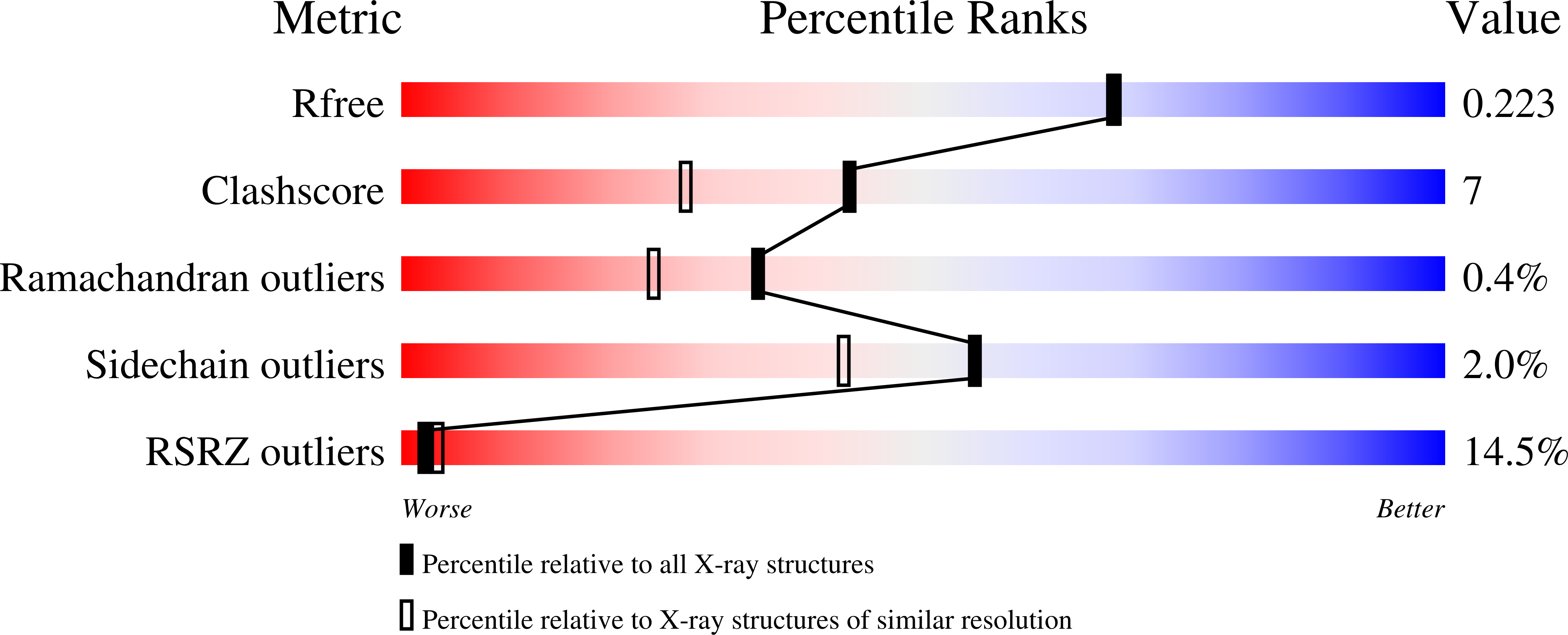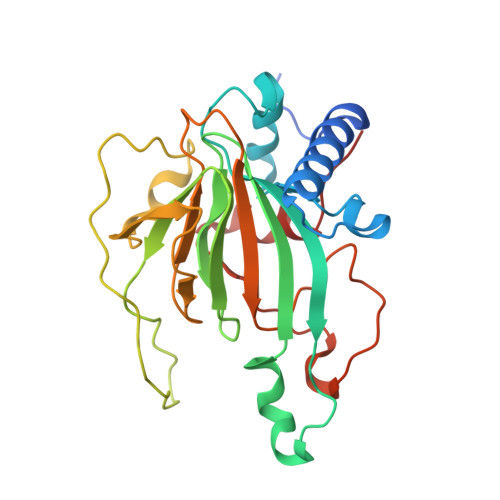X-ray structure of a novel L-ribose isomerase acting on a non-natural sugar L-ribose as its ideal substrate.
Yoshida, H., Yoshihara, A., Teraoka, M., Terami, Y., Takata, G., Izumori, K., Kamitori, S.(2014) FEBS J 281: 3150-3164
- PubMed: 24846739
- DOI: https://doi.org/10.1111/febs.12850
- Primary Citation of Related Structures:
4Q0P, 4Q0Q, 4Q0S, 4Q0U, 4Q0V - PubMed Abstract:
l-Ribose, a pentose, is not known to exist in nature. Although organisms typically do not have a metabolic pathway that uses l-ribose as a carbon source, prokaryotes use various sugars as carbon sources for survival. Acinetobacter sp. DL-28 has been shown to express the novel enzyme, l-ribose isomerase (AcL-RbI), which catalyzes reversible isomerization between l-ribose and l-ribulose. AcL-RbI showed the highest activity to l-ribose, followed by d-lyxose with 47% activity, and had no significant amino acid sequence similarity to structure-known proteins, except for weak homology with the d-lyxose isomerases from Escherichia coli O157 : H7 (18%) and Bacillus subtilis strain (19%). Thus, AcL-RbI is expected to have the unique three-dimensional structure to recognize l-ribose as its ideal substrate. The X-ray structures of AcL-RbI in complexes with substrates were determined. AcL-RbI had a cupin-type β-barrel structure, and the catalytic site was found between two large β-sheets with a bound metal ion. The catalytic site structures clearly showed that AcL-RbI adopted a cis-enediol intermediate mechanism for the isomerization reaction using two glutamate residues (Glu113 and Glu204) as acid/base catalysts. In its crystal form, AcL-RbI formed a unique homotetramer with many substrate sub-binding sites, which likely facilitated capture of the substrate. The atomic coordinates and structure factors of AcL-RbI/l-ribose, AcL-RbI/l-ribulose, AcL-RbI/ribitol, E204Q/l-ribose and E204Q/l-ribulose have been deposited in the Protein Data Bank under accession codes, 4Q0P, 4Q0Q, 4Q0S, 4Q0U and 4Q0V.
Organizational Affiliation:
Life Science Research Center and Faculty of Medicine, Kagawa University, Japan.

















